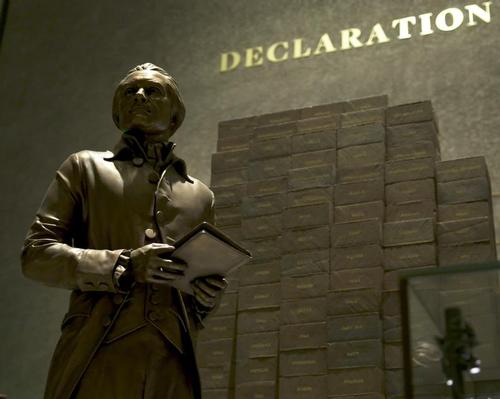28 Feb 2020
Smithsonian makes image banks rights free in the largest cultural open access programme in history
BY Andy Knaggs

Smithsonian Open Access, an initiative to provide copyright-free access to millions of digital collection images and data, has been launched, with anyone now able to download, transform and share content for free and for any purpose.
Beginning with 2.8 million images, the institution said that this is the largest and most interdisciplinary open-access programme by a museum or cultural institution to date. It aims to have more than three million images designated as open access by late 2020.
With contributions from all of the Smithsonian’s 19 museums, nine research centres, libraries, archives and the National Zoo, the programme includes content across the arts, sciences, history, culture, technology and design, from portraits of historic American figures to 3D scans of dinosaur skeletons. High-resolution 2D and 3D images, research datasets and collections metadata can all be downloaded in bulk.
While the Smithsonian has previously made more than 4.7 million collection images available online for personal, non-commercial and educational use, the new open-access project gives nearly three million of those images a Creative Commons Zero designation, which waives the institution’s copyright and permits a greater variety of uses, both commercial and non-commercial.
"Open access is a milestone for the Smithsonian in our efforts to reach, educate and inspire audiences," said Smithsonian secretary Lonnie Bunch. "Through this initiative, we are empowering people across the globe to reimagine and repurpose our collections in creative
new ways."
The Open Access project makes this Smithsonian content available via Creative Commons, Google Arts & Culture, Wikipedia and other digital platforms. Among those who have worked with the Smithsonian in using its open access collections to create original works and discover new insights are:
Google Arts & Culture, which applied machine learning to the entire Smithsonian collections dataset to uncover connections between early women scientists at the Smithsonian and their life’s work;
Artist Amy Karle, who used a 3D scan of a Triceratops skeleton from the National Museum of Natural History to create nine sculptures that explore the impact of technology on evolution;
Author Jon Scieszka and illustrator Steven Weinberg ‒ creators of the children’s book series AstroNuts ‒ who produced a free, downloadable booklet showing students how to remix Smithsonian Open Access images for their own projects;
Georgetown University Library’s Maker Hub, which challenged students to create projects using things such as artworks, electronics and textiles based on the Smithsonian Open Access collections.
Close Window